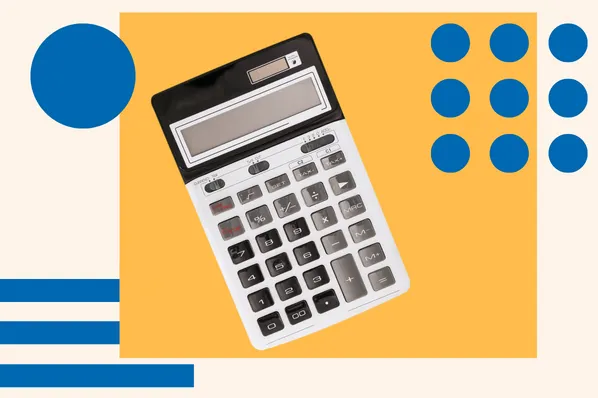What is Cash Flow?
Cash flow is the net amount of money moving in and out of a business. It shows where cash comes from and how it’s being used.
A positive cash flow means your cash inflows were greater than your cash outflows. If the cash flow is negative, the business might not have enough cash to finance operations. This could mean the business is financing operations by borrowing.
So, how do we determine the cash flow? A statement of cash flows, of course.
What is a Statement of Cash Flows?
A statement of cash flows studies operating, financing, and investing activities to show where your business’ money is coming from and where it’s being spent. It allows investors and creditors to assess a business' ability to meet obligations and produce future net cash inflows while determining the need for external financing.
There are two methods for determining cash flow: direct and indirect. Both methods look at cash flow over an accounting period, which is typically 12 months.
The direct method is used less often and requires more information than the indirect method. It lists cash inflows and outflows for every type of operating activity, including:
- Cash collected from customers
- Employee salaries
- Interest and dividends received
- Cash paid to suppliers or vendors
- Interest paid
- Income tax paid
The Financial Accounting Standards Board (FASB) prefers the direct method over the indirect method, because the direct method provides a more detailed view of the operating cash inflows and outflows of a business. And it can give decision makers and potential investors a more accurate picture of how a business is doing.
The indirect method is the most popular way to create a statement of cash flows. It starts by looking at the net income from the income statement. And it’s broken down into three main parts:
- Operating activities include revenue and operating expenses. They are only included if the cash payment occurred during the account period the statement reports on.
- Investing activities include purchasing property, a manufacturing plant, or equipment. They might also include the acquisition of a business.
- Financing activities include issuing shares, selling or repurchasing stock, and paying debt and dividends.
Let’s take a look at the steps you should take to prepare a statement of cash flows using the indirect method.
How to Prepare a Statement of Cash Flows
- Calculate net cash flow from operating activities.
- Calculate net cash flow from investing activities.
- Calculate net cash flow from financing activities.
- Combine net cash flows from operating, investing, and financing activities.
Once the net cash flows from operating, investing and financing activities are calculated and combined, you’ll see the net cash increase or decrease for the period. This confirms the net of these changes is equal to the change in cash on the balance sheet.
Operating Cash Flow
Operating cash flow (OCF or CFO) is the first portion of the statement of cash flows. And it determines the revenue-generating aspects of the business. The formula for calculating operating cash flow is:
Operating Cash Flow (OCF) = Total Revenue - Operating Expenses
For a business to be successful, long-term cash inflows must be greater than outflows. If outflows are greater than inflows, the business will likely need external financing.
Free Cash Flow
A company’s free cash flow is the cash they generate minus the cost of expenditures on assets. Below is the formula for calculating free cash flow:
Free cash flow = Net cash flow from operating activities - Capital expenditures
This gives you the remaining cash amount after your business pays for operating expenses and capital expenditures. The calculation is important because it shows if a business has enough cash left over to pay back investors.
Discounted Cash Flow
Discounted cash flow (DCF) is a method used to evaluate a potential investment opportunity. The discounted cash flow can be used to value a:
- Business
- Project or initiative
- Bond
- Company’s shares
The result shows how much return you can expect to earn from the investment. Here’s how to calculate discounted cash flow:
DCF = [CF1 / (1+r)1] + [CF2 / (1+r)2] + ... + [CFn / (1+r)n]
CF = cash flow in the period
n = the period number (years, quarters, or months)
r = discount rate or WACC (i.e., the rate a business expects to pay for its assets)
The DCF takes into account the time value of money -- the concept that a dollar today is worth more than a dollar tomorrow due to its earning potential (e.g., interest rate).
If you pay more than the DCF value, the return will be less than the discount rate. And if you pay less than the DCF value, the return will be greater than the discount rate. When the DCF value is higher than the cost of the potential investment, it’s likely a good one.
Whether you’re determining where your money is coming from and where it’s going or looking for investors and financing -- the cash flows allow you to see how cash is moving in and out of a business. With the information provided by the statement of cash flows, you’ll be well-prepared to make informed decisions about the future of your business.
Accounting
.png?width=112&height=112&name=ebook%20cover%20-%20%20transparent%20-%20financial%20planning%20templates%20(1).png)





![Debt-to-Equity Ratio, Demystified [+Helpful Formulas]](https://53.fs1.hubspotusercontent-na1.net/hubfs/53/debt-to-equity-1-20250115-1477462.webp)





